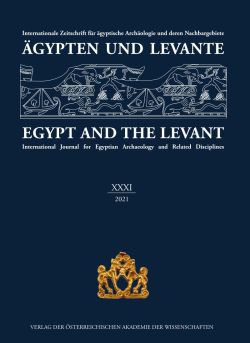
Ägypten und Levante 31, pp. 487-512, 2021/12/28
Internationale Zeitschrift für ägyptische Archäologie und deren Nachbargebiete
International Journal for Egyptian Archaeology and Related Disciplines
Even the scarce information hitherto known suggested that the excavations carried out by Shafik Farid from 1960 to 1962 in Tell el- Qolzum had uncovered an exceptionally well-preserved fortress of the New Kingdom. Unfortunately, the results of the excavations have never been published. It is therefore a fortunate coincidence that two photographs of the plans were recently discovered in the archives of the Schweizer Institut für ägyptische Bauforschung und Altertumskunde in Kairo, which show the building remains from the Byzantine period and from the New Kingdom that were uncovered under Farid’s supervision. Farid had apparently made the plans available to the then director of the Swiss Institute, Herbert Ricke, for a book project that was never completed. The plans are now presented in the following article, accompanied by some introductory remarks. While the younger building layer provides additions to older excavations by B. Bruyère, the plan of the New Kingdom layer reveals the most completely excavated fortification complex in Egypt to date. Particularly remarkable is a royal palace in the centre of the fortress and the uniformly planned, almost model-like overall structure of the fortress, which reveals a great structural similarity to the temple town of Medinet Habu. The construction of the fortress is probably to be seen in connection with Ramesses III’s interest in raw materials from the Sinai and the regions further east attested by Papyrus Harris I.
Keywords: Tell Qolzum, fortress, palace, domestic architecture, Ramses III, Medinet Habu, foreign relations